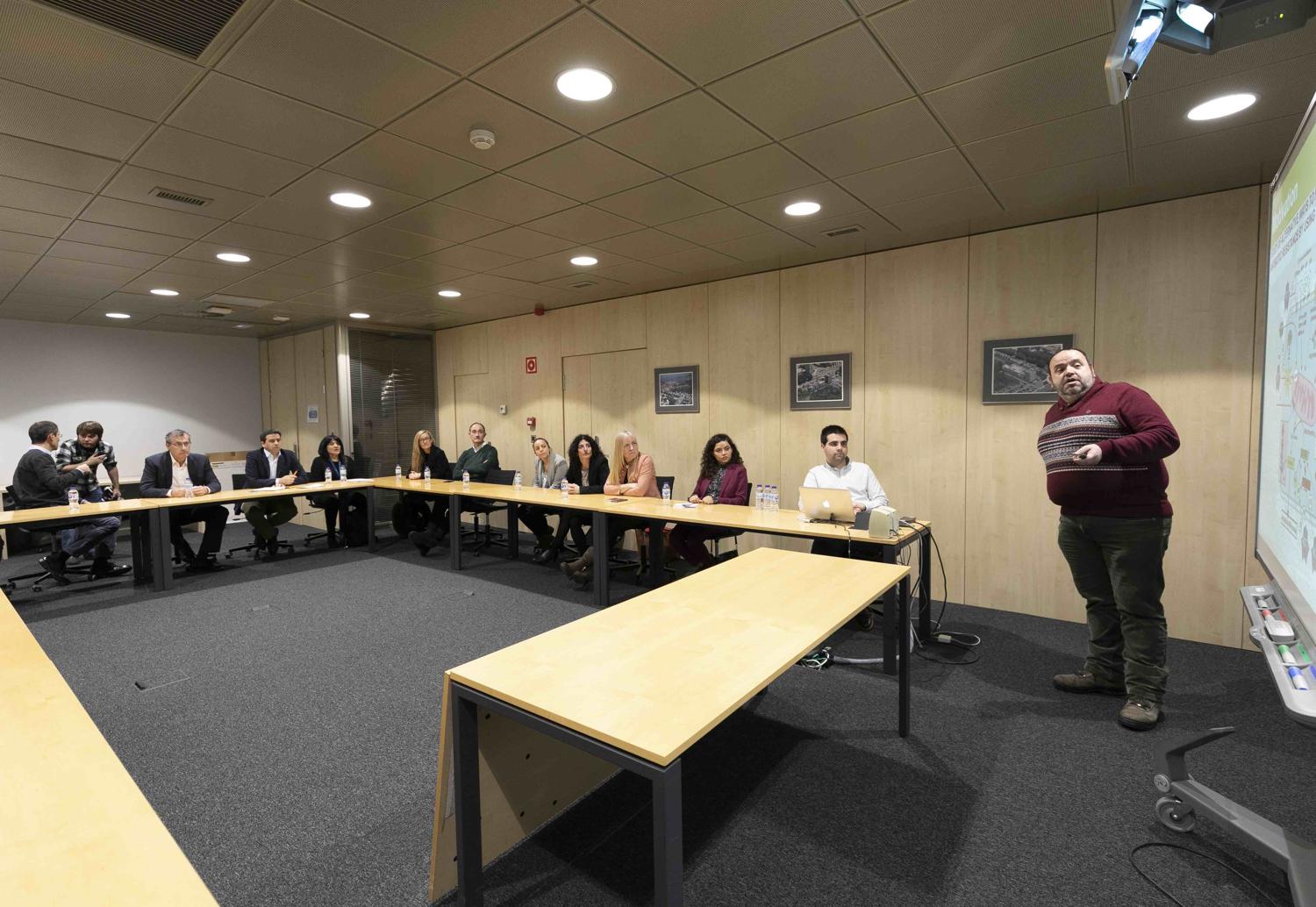CIC nanoGUNE hosts the annual meeting of researchers in the Fellows Gipuzkoa programme
The Fellows call designed to draw and retain talent in Gipuzkoa is open until 30 March.

Fellows Gipuzkoa aims to recruit personnel with post-doctoral training in internationally significant research groups for Gipuzkoa-based research groups, thus raising the scientific level of these groups. The Provincial Council will be maintaining the funding of the programme in 2020 in order to go on supporting research personnel who joined this programme during the previous call, and draw fresh talent. The deadline for submitting applications is 30 March.
Right now, there are 10 researchers working on their projects with the support of the Fellows programme. Specifically, Adriá Gil and Beatriz Martín-García are currently at nanoGUNE involved in a whole range of projects, such as computational design of new materials for medical applications and the development of new materials for optoelectronic devices. Adriá Gil is working on the computer design of metal and bioactive polyoxometalate complexes for medical applications in nanoGUNE’s Teoria group. And Beatriz Martín is working in the Nanodevices group. “The project I am working on is geared toward the development of new two-dimensional materials for optoelectronic devices, such as LEDs, electro-optical modulators or photodetectors,” said Beatriz Martín. “The main aim is in fact to improve and modulate the optical properties of two-dimensional materials through chemical modulation or the application of external stimuli. The goal is to seek new solutions to improve current performance in terms of efficiency, speed of response and sensitivity of the technological devices around us,” she added.“Fellows Gipuzkoa has offered me the chance to start three lines of research at a research centre like nanoGUNE, independently,” said Gil. He also highlighted the significance of the programme for the purpose of positioning himself well in terms of pursuing his scientific career and taking the next step towards a permanent research post.
Martín stressed that the programme offers “the possibility of continuing to work at a prestigious, internationally renowned research centre where I can develop my own projects, and this allows me to go on growing professionally and personally in an international multidisciplinary environment. I chose nanoGUNE because it offers an excellent combination between my experience and the proposed project: it has international, active surroundings where I can strike a balance between learning and my knowledge and experience. The research conducted at nanoGUNE is internationally recognised in the field of nanoscience due to the excellence of its scientific personnel and its results, and due to the quality of the labs, equipment/instruments and facilities it has available,” concluded the researcher.


